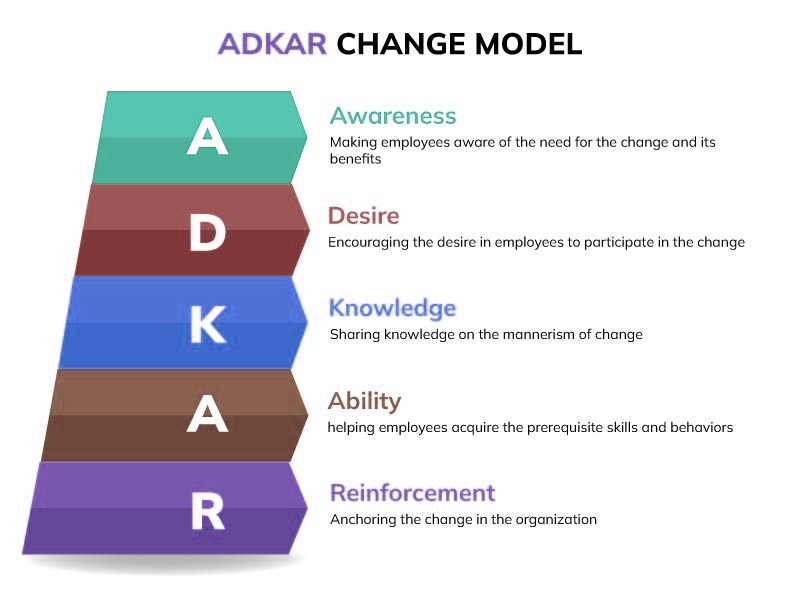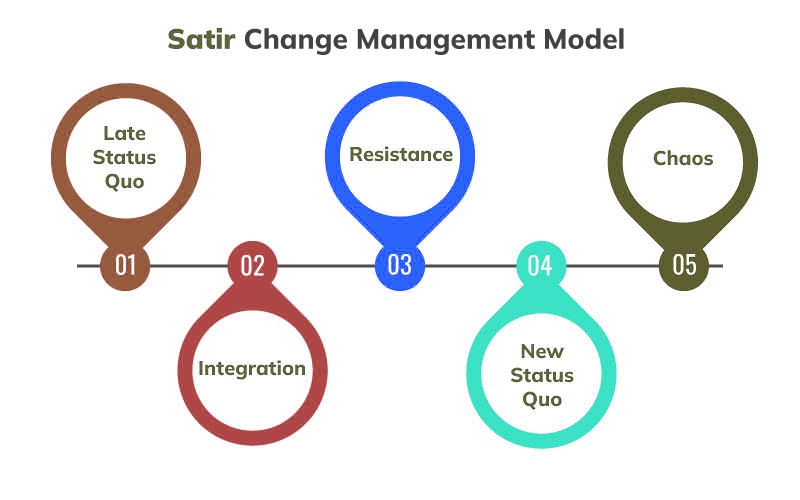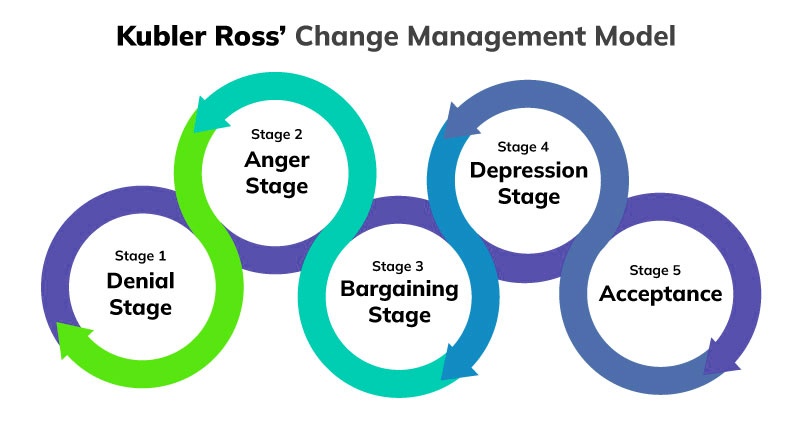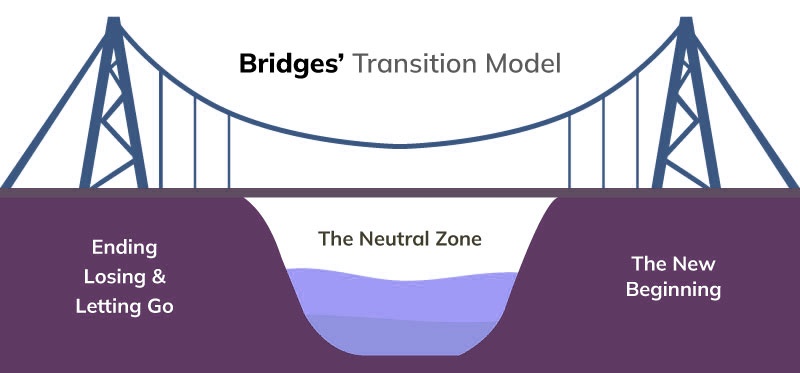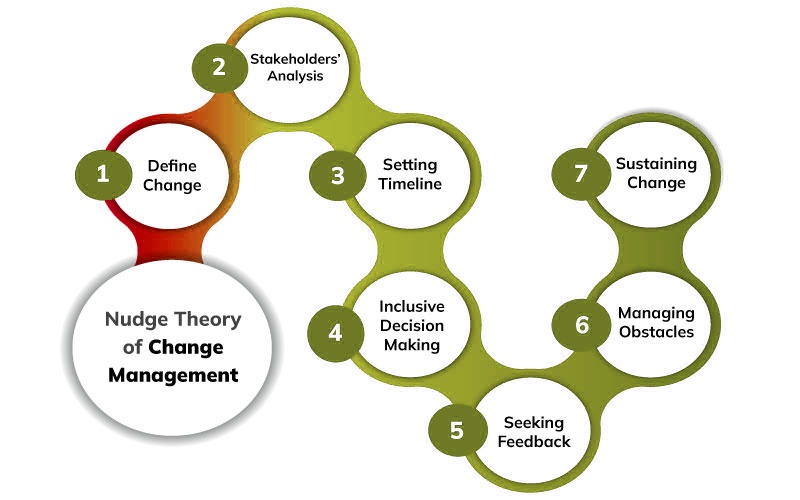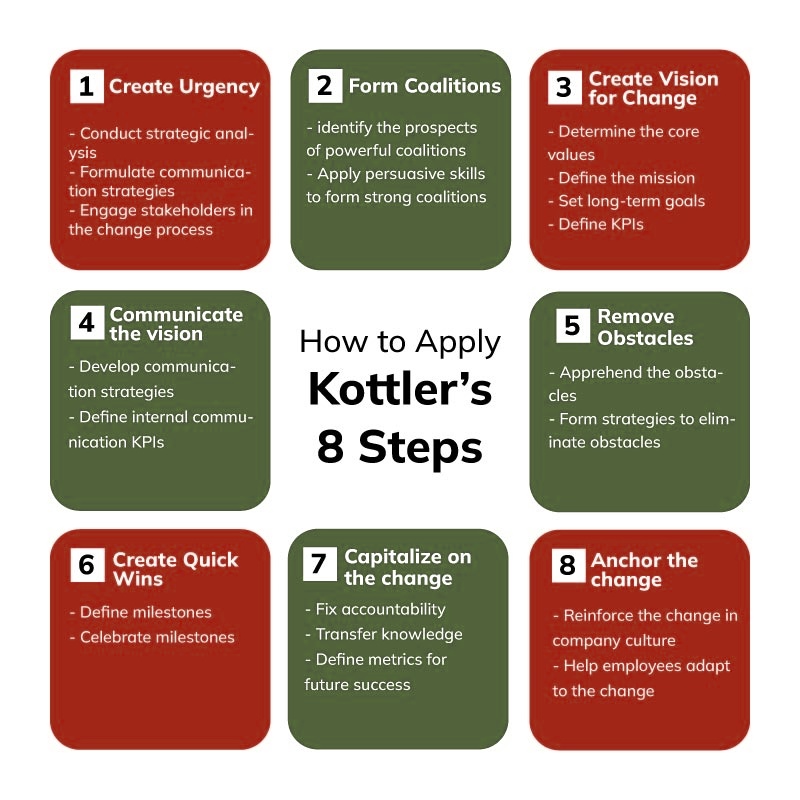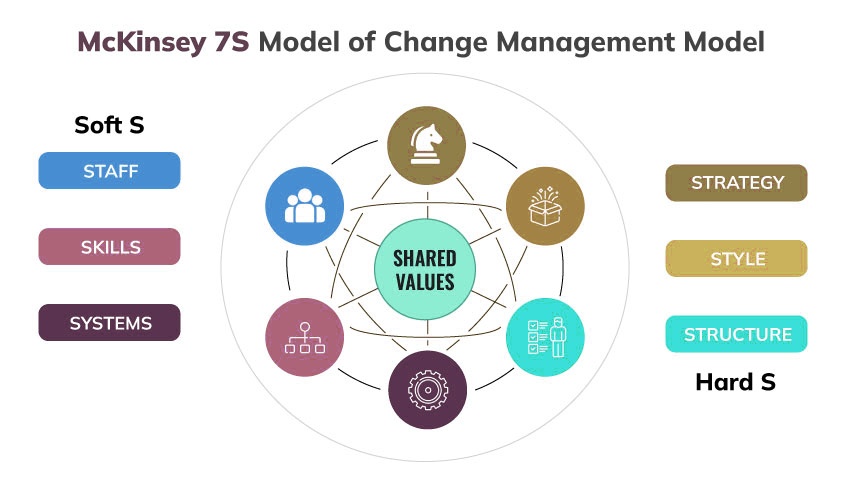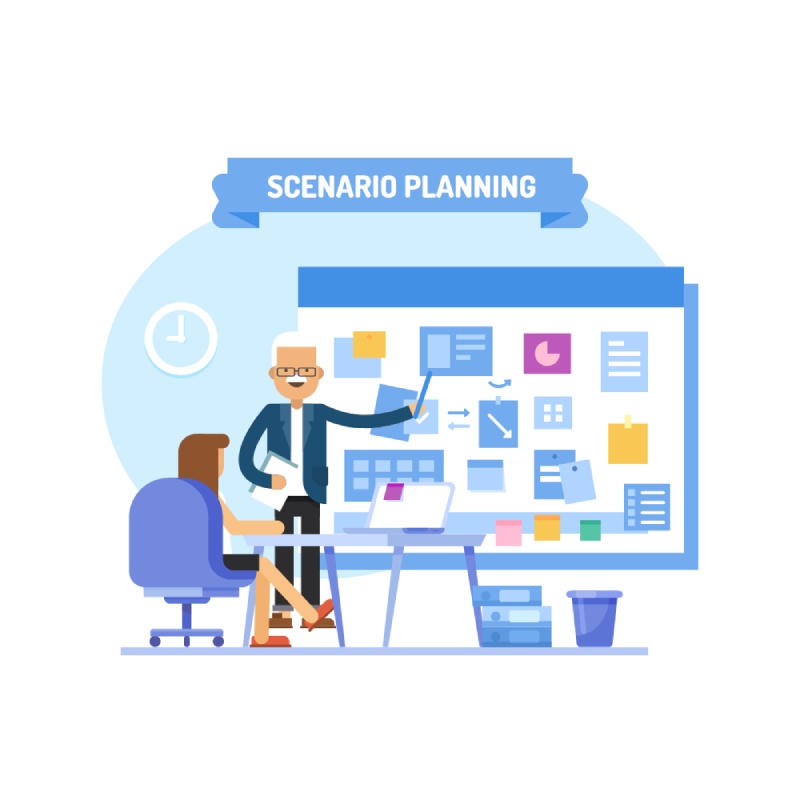Overview of the model
The Prosci ADKAR model of effective change management is derived from the Prosci Methodology. To elaborate, this methodology or theory is inspired by reflections coming from the leaders, teams, and stakeholders who have worked on large-scale change implementation at a global pedestal. Furthermore, the methodology explains the various processes, techniques, tools, and control measures that can be applied to organizational change management projects.
Table of Contents
Explaining further, The ADKAR model is an acronym for Awareness, Desire, Knowledge, Ability, and Reinforcement. Each of these verticals of the Prosci ADKAR model is delineated below.
- Awareness: It refers to the awareness within the organization with respect to the need for the change and its importance aligned to the strategic vision of the company. When people are aware of why a change is necessary, the resistance is less and the change implementation becomes much smoother.
- Desire: It explains the desire that stakeholders within a company have for participating in the process of change and supporting change implementation by making positive contributions and additional efforts.
- Knowledge: The next step relates to the criterion of knowledge that people responsible for the execution of the change should possess. They must have knowledge about how the change is to be planned and how its incorporation will be successful.
- Ability: Next, the criterion of ability refers to the skills, expertise, competencies, and behaviors that are needed for the change. Unless an organization does not have the abilities and behavior to make the integration of change successful, gaps will certainly remain.
- Reinforcement: After the change is implemented, it needs to be reinforced in the workplace every day. For that, the change has to be anchored and institutionalized effectively such that it sustains and delivers what is expected of it.
Although ADKAR and Kotter’s change model seem similar in terms of implementation, there is a difference between the two. ADKAR model focuses on individual behaviour change, while Kotter’s change model has a more comprehensive approach that looks at organizational change from a big-picture perspective.
Application of Prosci ADKAR Change Management Model
Understanding the application of the model is as imperative as comprehending the structure of the model. Illustrated below is the process using which organizations can apply the Prosci ADKAR model for implementing and managing change. At the organizational level, the ADKAR Model is applied in alignment with a 3-phase approach framework given by Prosci. The same is described below.
Phase 1: Prepare Approach
The first phase of the 3 phases is the prepare approach wherein project teams create their change management strategies. The activities in this phase are meant to support the change and give clear directions to it. These activities are listed below.
1. Define Success: It defines the kind of success that a project for change is trying to achieve and how it will add to the overall success of the company. It requires detailing on the profile of the change. The success of the change also needs to be defined in terms of how the success will be measured, the long-term goals in which the success will be viewed, and the alignment of the success with the company’s vision and mission. The definition of success here needs to be comprehensive, appealing, and value-oriented. The value proposition of the change has to be established with clarity and transparency.
2. Define Impact: It determines how a particular project on organizational change will impact individuals within the company. For that, there needs to be an identification of the groups likely to be impacted and how they can adapt. The change leaders need to define the following parameters.
- How will the change impact the organization?
- How will the change impact individuals within the company?
- Who will be directly impacted by the change?
- Impact of the change on the shared values and mission of the company
3. Define Approach: It explains the strategies and tactics that the change teams or change leaders will take for the successful implementation of the project. Identifying possible restraints, risk management, and fixing accountability are some important practices in terms of defining the approach. The approach can be best determined by conducting strategic analysis and figuring out what capabilities are needed to implement the change. While leading the change, the change managers must have a clearly defined approach in terms of strategies and tactics they are going to use to facilitate the change. Further, the approach needs to be defined both at the organizational level, management level, and individual level.
Phase 2: Managing Change
The next phase in the implementation of the Prosci model is the segment where the change has to be managed. In other words, it is about bringing the change management strategy to the forefront, and with respect to the ADKAR technique, this phase is highly important. In this phase, actions are to be planned to move employees within the organization along the change process for optimized results. The pivotal activities in this phase are listed below.
1. Planning and acting: In this stage, the ADKAR roadmap is developed to extend support and plans of action to individuals who will be impacted by the change. Further, the development of communication strategies, change management course of action, and other plans imperative to guiding and equipping the individuals are developed. Change leaders must have clear plans on how they will create awareness among team members, inspire the desire to participate among them, and share effective knowledge with them so that can act on the change in a contributing manner. Going further, the change leaders also need to enact plans for equipping the workforce with the abilities needed to manage the change and then plans to imbibe the change in the organization. The best strategy would be to classify plans as per the ADKAR theme.
2. Tracking performance: It involves the use of different key performance indicators to track the performance of individuals in terms of their contributions to the progress of the change. Further, the opportunities and competencies of individuals are tracked to assess the alignment of individual performance with the progress of the goal. Moreover, KPIs need to be defined and applied by leaders to measure the success of each plan and objective. The plans defined in the previous step have to be monitored with control measures to ensure that gaps in strategic plans can be recognized in a timely manner and be plugged. Also, milestones need to be designated to actions and plans in alignment with the end results.
3. Adaption to actions: After tracking the performance and identifying the gaps, refinements are made to the change management strategies. Adaptive actions are prepared and the tracking of performance is kept continuous. Again, this is an imperative part of the process as adaptive actions will compensate for the existing gaps in the present state of things. The change management process will continuously improve with relevant and effective adaptive measures being taken at various levels within the organization.
Phase 3: Sustaining Outcomes
This stage, the final stage of the Prosci Model ensures that the change is effectively institutionalized within the organization and employees adapt to the same. Further, it explains the efforts and the strategies that are needed at the organizational level to sustain the change and drive it in the direction of the expected outcomes. The following salient activities are associated with this phase.
1. Reviewing performance: After the change comes to life within the organization, its performance is reviewed against the benchmark of the desired state. To reflect on the performance of the change, the ADKAR outcomes are reviewed. Here, a different set of KPIs needs to be defined with respect to measuring the improvements in the new status quo. In the previous stage, KPIs tracked the efficiency of individuals and strategic plans with respect to managing the change. Contrary to that, performance reviews and tracking in this stage correlate to the idea of improving result outcomes and meeting the strategic vision behind the change. To add, feedback sharing also forms an essential part of the review process, and to manage performances better, companies should look to improve employee engagement metrics.
2. Activation of sustainment: The top management needs to initiate measures and strategies that will help in sustaining the change and its positive impact in the long run. It also involves defining the various roles within the workforce for sustaining the change. For instance, if a new CEO needs to be appointed after a merger or if the company needs to invest in automation for the sustainment of the change, it will count under activation of sustainment.
3. Transfer of ownership: It involves the transfer of assets and knowledge sharing for responsible and effective sustainment of change. The top management defines how efforts will be made to sustain the change. Also, milestones are set for the success of the change and are celebrated on their accomplishment. People in the organization need to own up to the responsibility of leading the change further after its incorporation. Unless there is no accountability, the future of the change will remain uncertain. Hence, the transfer of ownership is a highly crucial step when it comes to institutionalizing a change.
Prosci Change Management Model example taking Woolworths’ case
In 2017, Woolworths Group launched its WooliesX project to drive major changes in terms of enabling the group to excel in digital transformation. The company realized that digitalization is the need of the hour to stay competitive and deliver better customer experiences. So, when the company was undergoing this massive transformation, the ADKAR model was applied in the following ways.
Phase 1: Preparation Phase
1. Defining impact: The WooliesX project managers defined how the massive digitalization strategy will impact all stakeholders including employees and customers. Further, the impact was defined in terms of how a digital platform will add to the company’s success by tapping on the incrementally growing market of online grocery shoppers
2. Defining approach: To make Woolies X a success, the Woolworths Group’s leaders prepared effective strategies, got new expertise onboard, hired technical experts, carried out predictive analytics of consumer behaviors, trained employees for digitalization, and planned the key features of its digital portal. Innovation strategies and development strategies both back end and front were worked on. The clear plans on how the change will be processed and the prerequisites for it were presented in front of the top management.
Phase 2: Managing Change
1. Planning and acting: After the WooliesX project was approved, the ADKAR layout was prepared by the company’s change leaders to create awareness around the change. Further, the company acted to encourage the desire among employees to contribute to the change positively, share knowledge with individuals on how the change will be brought, and provide training on the needed skills. Actionable strategies and tactics were implemented to help employees optimize their performance and productivity to supplement the change. Various control measures were also planned.
2. Tracking performance: The company used various employee engagement KPIs and other metrics to ascertain how the developers and other departments were working to develop WooliesX as envisaged by the company. Besides, metrics and KPIs of SEO, website performance, and digital marketing were also tracked in a consistent way to manage and improve the performance of WooliesX. The key metrics of tracking website performance and SEO performance include the number of sign-ups, bounce rate, the average duration of sessions, conversions, page load time, and so on.
3. Adaptive Actions: Whenever the company found that there were gaps in performance with respect to the progress of the change, the company made the necessary refinements by taking adaptive actions. Adaptive actions were taken to optimize the user-friendliness, mobile-friendliness, and page loading time of WooliesX. Besides, new features were constantly added to the portal as a part of adaptive actions to deliver a better digital experience.
Phase 3: Sustaining Outcomes
1. Reviewing Performance: Woolworths Group consistently assessed the outcomes from WooliesX by comparing the e-commerce sales, employee reward benefits, and other metrics with the set targets.
2. Activation of Sustainment: Activation roles were defined by the company in terms of who will be responsible for Sustaining the WooliesX project in the long run and how it will be aligned with the vision of the company. A separate corporate office was set up in Surry Hills, Australia to manage WooliesX and make it a highly successful initiative. Besides, Amanda Bardwell was appointed as the MD of WooliesX, and Annette Karantoni was appointed as the director for B2C e-commerce. To add, a wide range of measures were planned to make WooliesX a highly successful portal for the company with features that will keep users engaged and will deliver complete satisfaction to e-commerce grocery shoppers.
3. Transfer of ownership: The knowledge and expertise with respect to digital media, digital business, and other domains was shared with teams and new hires in the WooliesX division so that they can help in sustaining the project and ensure that it meets its ambitions.


